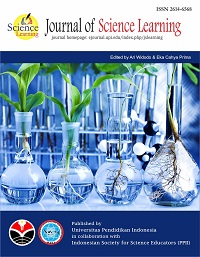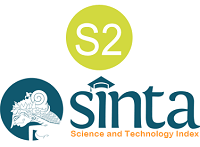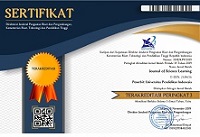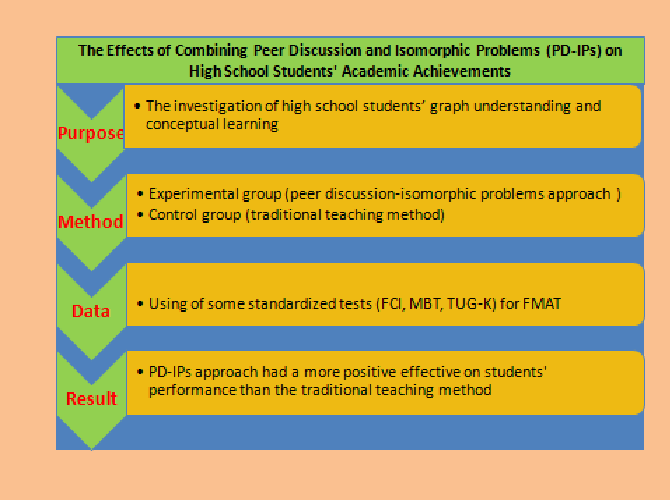
The Effects of Combining Peer Discussion and Isomorphic Problems (PD-IPs) on High School Students' Academic Achievements
Abstract
The study investigated the effects of a combination of Peer Discussion and Isomorphic Problems (PD-IPs) on high school students' graph understanding and conceptual learning. The study was conducted on kinematics and Newton’s Laws of Motion with 67 high school students from two groups. The experimental group (EG) consisted of 34 students, while the control group (CG) combined with 33 students. The students in EG were taught using the PD-IPs approach, while those in CG were taught using the traditional method. The research data were collected using the Force Motion Achievement Test (FMAT), which was composed by selecting multiple-choice questions from some standardized tests (Force Concept Inventory, Mechanic Baseline Test, Test of Understanding Graphs in Kinematics). The FMAT includes 25 multiple-choice questions. 11 were related to graph understanding, and the rest were related to conceptual learning. The research showed that the PD-IPs approach had a more positive effect on students' understanding of graphs and conceptual learning than the traditional teaching method. The findings indicate that implementing the PD-IPs approach requires minimal effort while demonstrating the potential to evaluate and improve high school student's academic performance in physics education.
Full Text:
Download PDFReferences
Abal Abas, Z., Norizan, M. N., Zainal Abidin, Z., Abdul Rahman, A. F. N., Rahmalan, H., Ahmed Tharbe, I. H., ... & Ahmad Sobri, S. (2022). Modeling Physical Interaction and Understanding Peer Group Learning Dynamics: Graph Analytics Approach Perspective. Mathematics, 10(9), 1430.
Abdjul, T., Ntobuo, N. E., & Payu, C. (2019). Development of virtual laboratory-based learning to improve physics learning outcomes of high school students. Jurnal Pendidikan Fisika Indonesia, 15(2), 97-106.
Al-Hebaishi, S. M. (2017). The effect of peer instruction method on pre-service teachers’ conceptual comprehension of methodology course. Journal of Education and Learning, 6(3), 70-82.
Amin, B. D., Sahib, E. P., Harianto, Y. I., Patandean, A. J., Herman., & Sujiono, E. H. (2020). The interpreting ability on science kinematics graphs of senior high school students in south Sulawesi, Indonesia. Jurnal Pendidikan IPA Indonesia, 9(2), 179-186.
Antwi, V., Raheem, K., & Aboagye, K. (2016). The impact of peer instruction on students' conceptual understanding in mechanics in central region of Ghana. European Journal of Research and Reflection in Educational Sciences, 4(9), 54-67.
Antwi, V., Savelsbergh, E., & Eijkelhof, H. (2018). Understanding kinematics graphs using MBL tools, simulations, and graph samples in an interactive engagement context in a Ghanaian university. Journal of Physics: Conference Series, 1076, 012002, 1-9.
Bao, L., & Koeing, K. (2019). Physics education research for 21st century learning. Disciplinary and Interdisciplinary Science Education Research, 1(2), 1-12.
Batlolona, J. R., Singerin, S., & Diantoro, M. (2020). Influence of problem-based learning model on student mental models. Jurnal Pendidikan Fisika Indonesia, 16(1), 14-23.
Bauer, T., Biehler, R., & Lankeit, E. (2022). ConcepTests in Undergraduate Real Analysis: Comparing Peer Discussion and Instructional Explanation Settings. International Journal of Research in Undergraduate Mathematics Education, 1-35.
Beichner, R. J. (1994). Testing student interpretation of kinematics graphs. American Journal of Physics, 62(8), 750-762.
Bektasli, B., & White, A. L. (2012). The relationships between logical thinking, gender and kinematics graphs interpretation skills. Eurasian Journal of Educational Research, 48, 1-20.
Celik, H., & Pektas, H. M. (2017). Graphic comprehension and interpretation skills of preservice teachers with different learning approaches in a technology-aided learning environment. International Journal of Science and Mathematics Education, 15, 1-17.
Gok, T. (2013). A comparison of students' performance skill and confidence with peer instruction and formal education. Journal of Baltic Science Education, 12(6), 747-758.
Gok, T. (2014). Peer instruction in the physics classroom: Effects on gender difference performance, conceptual learning, and problem solving. Journal of Baltic Science Education, 13(6), 776-788.
Gok, T. (2015). An investigation of students' performance after peer instruction with stepwise problem-solving strategies. International Journal of Science and Mathematics Education, 13, 561-582.
Gok, T., & Gok, O. (2022). High school students' comprehension of kinematics graphs with peer instruction approach. Jurnal Pendidikan Fisika Indonesia, 18(2), 144-155.
Hake, R. R. (1998). Interactive-engagement versus traditional methods: A six-thousand student survey of mechanics test data for introductory physics courses. American Journal of Physics, 66, 64–74.
Halloun, I. A., & Hestenes, D. (1985). The initial knowledge state of college physics students. American Journal of Physics, 53(11), 1043-1055.
Haratua, T., & Sirait, J. (2016). Representations based physics instruction to enhance students' problem solving. American Journal of Educational Research, 4(1), 1-4.
Hestenes, D., & Wells, M. (1992). A mechanics baseline test. The Physics Teacher, 30, 159-166.
Hestenes, D., Wells, M., & Swackhamer, G. (1992). Force concept inventory. The Physics Teacher, 30, 141-158
Ivanjek, L., Susac, A., Planinic, M., Andrasevic, A., & Milin-Sipus, Z. (2016). Student reasoning about graphs in different contexts. Physical Review Physics Education Research, 12, 010106, 1-13.
Kjolsing, E., & Einde, L. V. D. (2016). Peer instruction: Using isomorphic questions to document learning gains in a small statics class. Journal of Professional Issues in Engineering Education and Practice, 142(4), 04016005.
Lasry, N., Charles, E., & Whittaker, C. (2016). Effective variations of peer instruction: The effects of peer discussions, committing to an answer, and reaching a consensus. American Journal of Physics, 84(8), 639-645.
Manurung, S. R., Mihardi, S., Rustaman, N. Y., & Siregar, N. (2018). Improvement of graph interpretation ability using hypertext-assisted kinematic learning and formal thinking ability. Jurnal Pendidikan Fisika Indonesia, 14(1), 1-6.
Mariati, P. S., Betty, M. T., & Sehat, S. (2017). The problem-solving learning model uses video recording of experiments of kinematics and dynamics to improve the student's cognition and metacognition. Jurnal Pendidikan Fisika Indonesia, 13(1), 25-32.
Maries, A., & Singh, C. (2013). Exploring one aspect of pedagogical content knowledge of teaching assistants using the test of understanding graphs in kinematics. Physical Review Special Topics-Physics Education Research, 9, 020120, 1-14.
Mazur, E. (1997). Peer instruction: A user’s manual. Prentice Hall: Upper Saddle River, New Jersey.
Mazur, E., & Watkins, J. (2010). Just in time teaching and peer instruction. In S. Scott & M. Mark (Eds.), Just in time teaching: Across the disciplines, and across the academy (pp. 39-62). Sterling, VA: Stylus.
Michinov, N., Morice, J., & Ferriéres, V. (2015). A step in peer instruction: Using the stepladder technique to improve learning. Computers & Education, 91, 1-13.
Millar, R., & Manoharan, S. (2021). Repeat individualized assessment using isomorphic questions: a novel approach to increase peer discussion and learning. International Journal of Educational Technology in Higher Education, 18(22), 1-15.
Munfaridah, N., Avraamidou, L., & Goedhart, M. (2021). The use of multiple representation in undergraduate physics education: What do we know and where do we go from here?. EURASIA Journal of Mathematics, Science and Technology Education, 17(1), 1-19.
Nielsen, K. L., Hansen-Nygård, G., & Stav, J. B. (2012). Investigating peer instruction: How the initial voting session affects students’ experiences of group discussion. ISRN Education, 290157.
Nielsen, K. L. Hansen, G., & Stav, J. B. (2016). How the initial thinking period affects student argumentation during peer instruction: students’ experiences versus observations. Studies in Higher Education, 41(1), 124-138.
Nieminen, P., Savinainen, A., & Viiri, J. (2010). Force concept inventory-based multiple-choice test for investigating students' representational consistency. Physical Review Special Topics-Physics Education Research, 6, 020109, 1-12.
Nisa, E. K., Jatmiko, B., & Koestiari, T. (2018). Development of inquiry-based physics teaching materials to increase critical thinking skills of high school students. Jurnal Pendidikan Fisika Indonesia, 14(1), 18-25.
Nixon, R. S., Godfrey, T. J., Mayhew, N. T., & Wiegert, C. C. (2016). Undergraduate student construction and interpretation of graphs in physics lab activities. Physical Review Special Topics-Physics Education Research, 12, 010104, 1-19.
Petrova, H. G. (2016). Developing students' graphic skills in physics education at secondary school. IOSR Journal of Research& Method in Education (IOSR-JRME), 6(5), 123-126.
Planinic, M., Milin-Sipus, Z., Katic, H., Susac, A., & Ivanjek, L. (2012). Comparison of student understanding of line graph slope in physics and mathematics. International Journal of Science and Mathematics Education, 10, 1393-1414.
Planinic, M., Ivanjek, L., & Susac, A. (2013). Comparison of university students' understanding of graphs in different contexts. Physical Review Special Topics-Physics Education Research, 9, 020103, 1-9.
Reay, N. W., Li, P., & Bao, L. (2008). Testing a new voting machine question methodology. American Journal of Physics, 76(2), 171-178.
Reddy, M. V. B., & Panacharoensawad, B. (2017). Students problem-solving difficulties and implications in Physics: An empirical study on influencing factors. Journal of Education and Practice, 8(14), 59-62.
Sari, N. P. E. A., Santyasa, I. W., & Gunadi, I. G. A. (2021). The effect of conceptual change models on students' conceptual understanding in learning physics. Jurnal Pendidikan Fisika Indonesia, 17(2), 94-105.
Savinainen, A., Nieminen, P., Makynen, A., & Viiri, J. (2013). Teaching and evaluation materials utilizing multiple representations in mechanics. Physics Education, 48(3), 372-377.
Sayer, R., Marshman, E., & Singh, C. (2016). Case study evaluating just-in-time teaching and peer instruction using clickers in a quantum mechanics course. Physical Review Physics Education Research, 12, 020133, 1-23.
Straw, A., Wicker, E., & Harper, N. G. (2021). Effects of peer instruction pedagogy on concept mastery in a first professional year pharmacy self-care course. Currents in Pharmacy Teaching and Learning, 13(3), 273-278.
Suppapittayaporn, D., Emarat, N., & Arayathanitkul, K. (2010). The effectiveness of peer instruction and structured inquiry on conceptual understanding of force and motion: a case study from Thailand. Research in Science & Technological Education, 28(1), 63-79.
Theasy, Y., Wiyanto, & Sujarwata (2018). Multi-representation ability of students on the problem solving physics. Journal of Physics: Conference Series, 983, 012005.
Thornton, R. K., & Sokoloff, D. R. (1998). Assessing student learning of Newton’s laws: The force and motion conceptual evaluation and the evaluation of active learning laboratory and lecture curricula. American Journal of Physics, 66(4), 338-352.
Tullis, J. G., & Goldstone, R. L. (2020). Why does peer instruction benefit student learning?. Cognitive Research: Principles and Implications, 5(15), 1-12.
Vaara, R. L., & Sasaki, D. G. G. (2019). Teaching kinematic graphs in an undergraduate course using an active methodology mediated by video analysis. LUMAT: International Journal on Math, Science and Technology Education, 7(1), 1-26.
Versteeg, M., van Blankenstein, F. M., Putter, H., & Steendijk, P. (2019). Peer instruction improves comprehension and transfer of physiological concepts: a randomized comparison with self-explanation. Advances in Health Sciences Education, 24, 151-165.
Vickrey, T., Rosploch, K., Rahmanian, R., Pilarz, M., & Stains, M. (2015). Research-based implementation of peer instruction: A literature review. CBE-Life Sciences Education, 14, 1-11.
Walde, G. S. (2017). Difficulties of concept of function: The case of general secondary school students of Ethiopia. International Journal of Scientific & Engineering Research, 8(4), 1-10.
Wang, S., & Murota, M. (2016). Possibilities and limitations of integrating peer instruction into technical creativity education. Instructional Science, 44(6), 501-525.
Woo, P. S., Rameli, M. R. M., & Kosnin, A. M. (2022). A meta-analysis on the impact of peer instruction on students' learning. Sains Humanika, 14(3), 21-27.
Young, H. D., & Freedman, R. A. (2008). University physics with modern physics (12th edition). Pearson International Edition.
Zhang, P., Ding, L., & Mazur, E. (2017). Peer Instruction in introductory physics: A method to bring about positive changes in students’ attitudes and beliefs. Physical Review Physics Education Research, 113, 010104, 1-9.
Zavala, G., Tejeda, S., Barniol, P., & Beichner, R. J. (2017). Modifying the test of understanding graphs in kinematics. Physical Review Physics Education Research, 13, 020111, 1-16.
DOI: https://doi.org/10.17509/jsl.v6i3.56110
Refbacks
- There are currently no refbacks.
Copyright (c) 2023 Tolga Gök

This work is licensed under a Creative Commons Attribution-ShareAlike 4.0 International License.
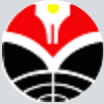

Jl. Dr. Setiabudhi 229 Bandung 40154, West Java, Indonesia





